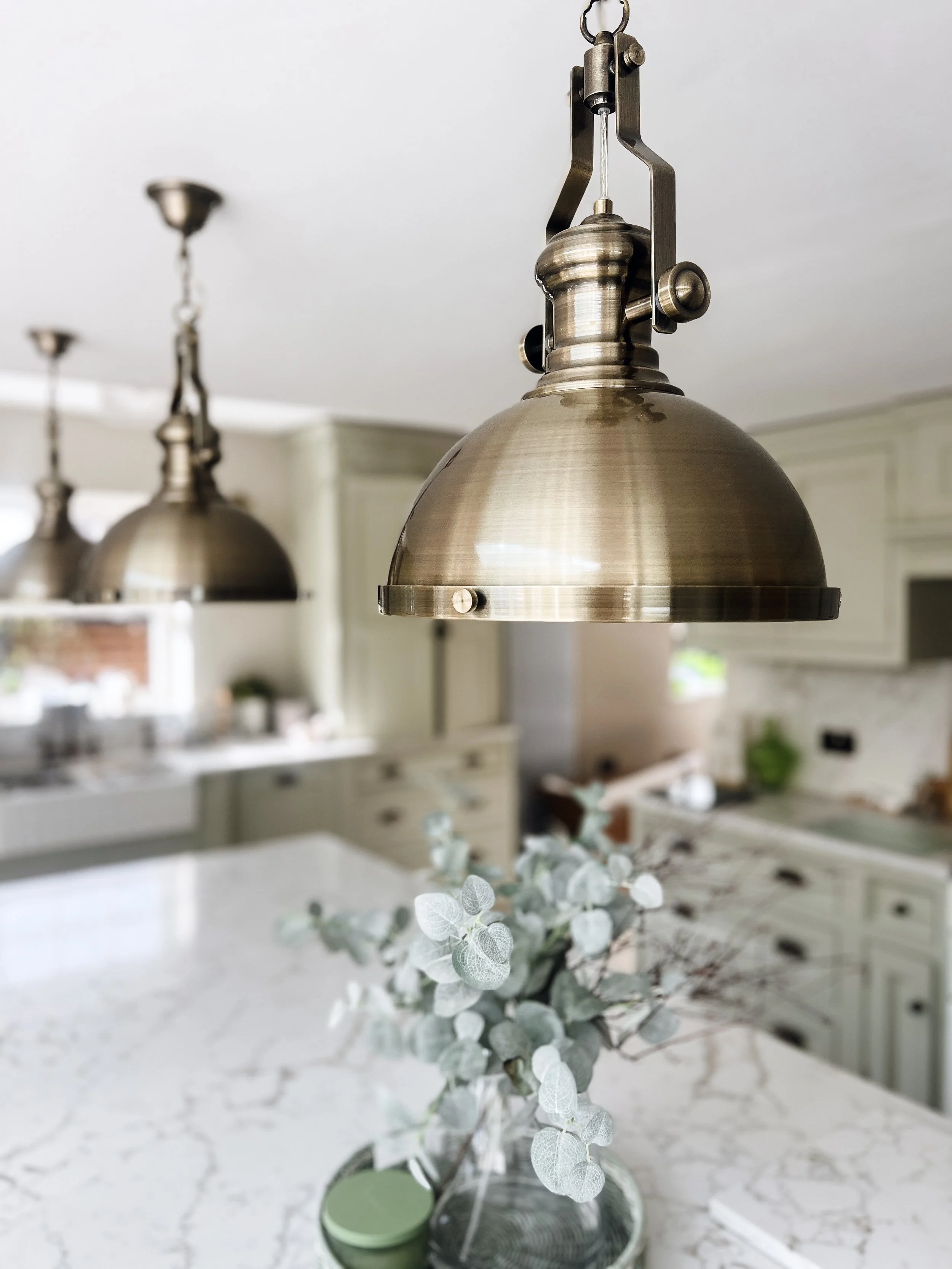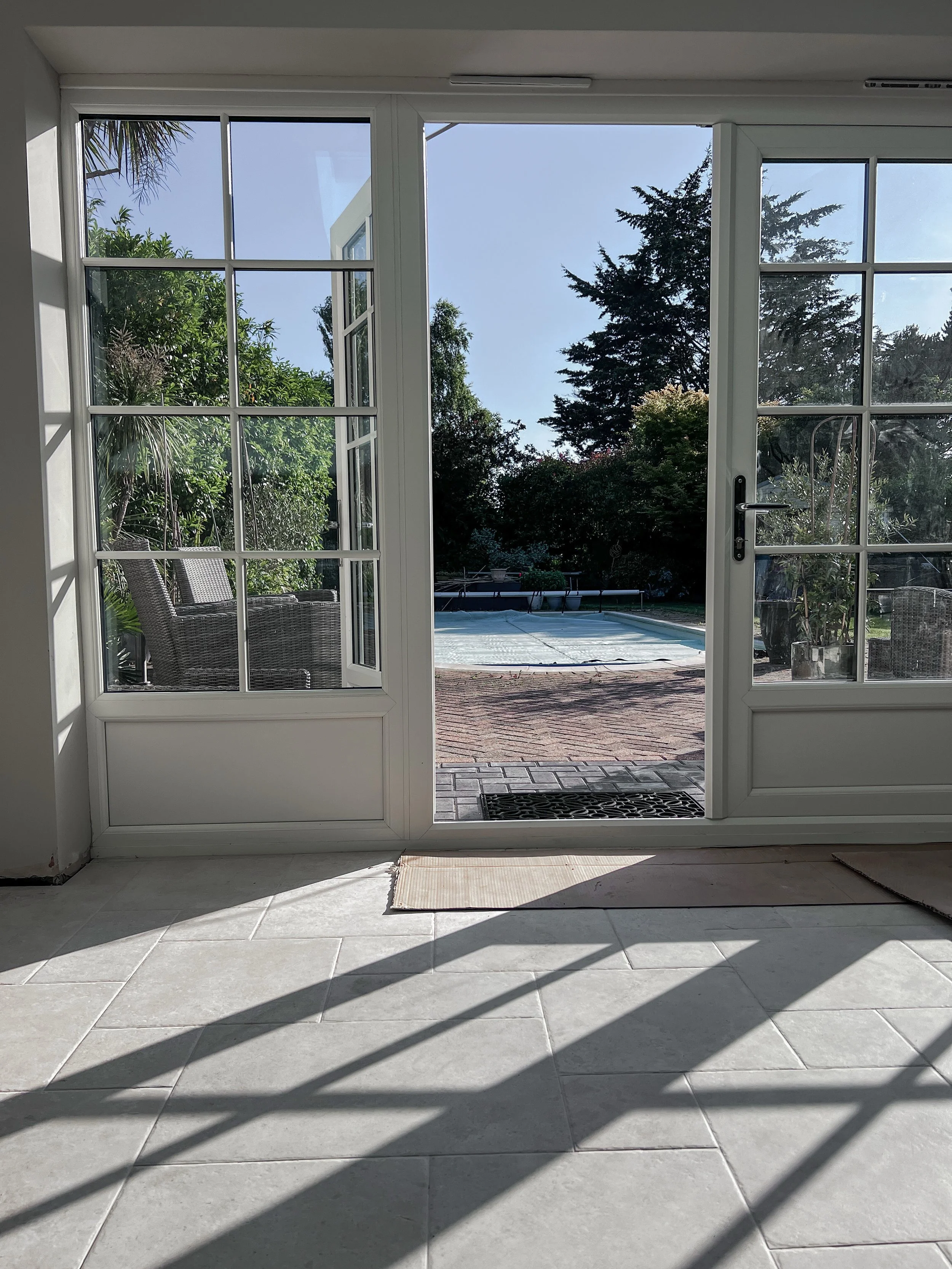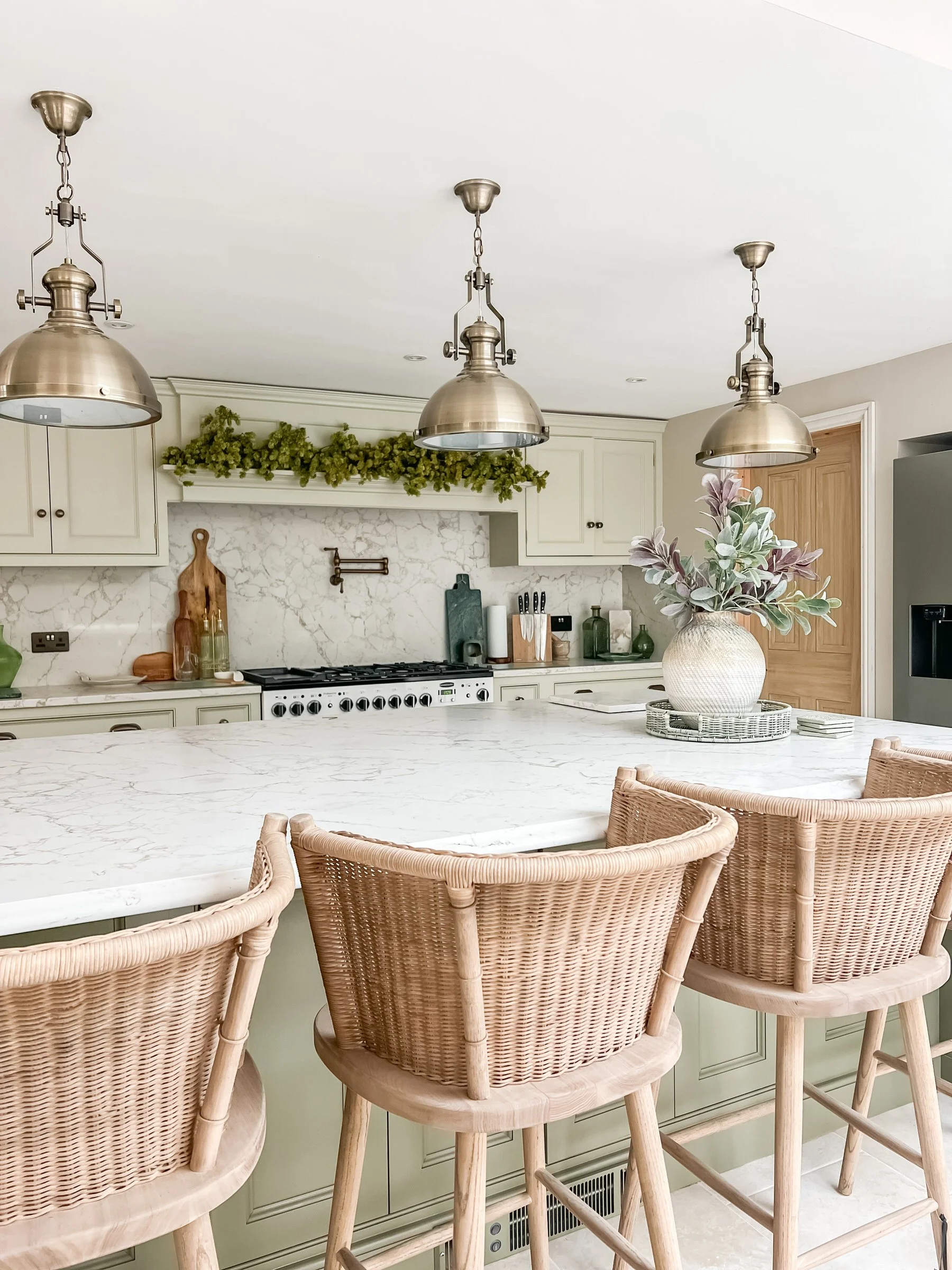Surviving a Home Extension: 10 Things I Wish I Knew Before Starting
If you’re planning a home extension in the UK, I hope these tips from our 12-month renovation help you prepare for what’s really ahead.
If you’ve ever watched a home renovation programme and thought that looks stressful… well, you’re absolutely right. We’re now 12 months into our extension project (originally meant to be 180 days—ha!), and while I wouldn’t change the outcome for the world, there are definitely a few things I wish I’d known before we started.
From unexpected surprises (hello, hidden chimney!) to budget blowouts and family chaos, it’s been a rollercoaster. If you’re planning an extension of your own, here are 10 lessons I’ve learned the hard way. Hopefully, they’ll save you a little stress, money, and maybe even a few arguments along the way!
1. There Will Always Be Surprises
No matter how much you plan, something unexpected will crop up. We discovered a chimney and fireplace we didn’t even know existed! Then came soakaways in the garden, an expense we hadn’t factored in.
The truth is, nothing ever goes exactly to plan, and surprises are part of the process. The important thing is not to let them escalate. There are always options, and this is where having a good builder really matters. Our builder was fantastic; every time something cropped up, he came to us with different solutions and was mindful of our budget. We were honest with him about not having an endless pot of money, and he was equally open with us. That kind of communication is invaluable.
My advice: set aside at least 10–15% of your budget for surprises, research things yourself so you know you’re being given the best advice, and always remember: it’s your build, your home — so the final decision has to feel right for you.
2. Budgets Creep up Fast
Everyone told us to allow a contingency, which is usually around 10–15%. We honestly thought we had it nailed. I’d researched so much, costed everything carefully, and felt confident we were covered. And yet… here we are, about £35k over budget.
Yes, some of that came from the surprises (like the hidden chimney and unexpected soakaways — see point 1), but a lot was down to the little things we hadn’t factored in. It’s so easy to budget for the “big ticket” items like the build, kitchen, or bathrooms, but what catches you out are all the finishing details. Sockets, light fittings, flooring upgrades, electrics, curtain poles, even breakfast bar stools, they all add up, and suddenly you’re thousands over what you’d planned.
It’s also incredibly easy to fall into the trap of “while we’re at it, we may as well…” upgrades. A slightly nicer tap, an extra cupboard, a different tile, none of these feel huge at the time, but multiplied across a whole house, they’ll blow your budget wide open.
The key is knowing where to spend and where to save. Certain things are worth the investment, for me, that was a pot tap by the cooker and stone worktops, which I knew I’d use and love every day. But other areas don’t need to be expensive. We decided to paint the whole extension and even the kitchen cupboards ourselves — and that one decision saved us over £3,000. We became pretty handy with a paintbrush in the process (new retirement plan, perhaps!).
My advice:
Get quotes in writing and track every single payment, even the tiny ones.
Question every extra before you agree — ask if it’s really necessary or if there’s a more cost-effective option.
Be realistic about the hidden extras, because they will come.
Pick your splurges carefully and compromise on things you can tackle yourself.
Budgets are tough, but being open and honest with your builder (and yourself!) about what you can and can’t stretch to will help massively.
3. Communication With Trades is Everything
We had an architect whose designs simply didn’t work for us, so I ended up redesigning the project myself. It was daunting at first, but it taught me that you don’t have to just accept everything you’re given.
The biggest lesson? Don’t be afraid to ask questions, challenge decisions, and make sure you fully understand what’s being suggested. A good builder or tradesperson should always be willing to explain things in plain language and give you options rather than making you feel rushed or railroaded.
I’d also recommend getting as much as possible in writing — whether it’s quotes, timelines, or small changes along the way. Verbal conversations can easily get forgotten, misheard, or misunderstood once the dust starts flying. Having it written down protects everyone and keeps things clear.
It also helps to keep the lines of communication open and respectful. Tradespeople appreciate it when you take an interest and show them you value their expertise, but remember: it’s your home and your vision. The best working relationships are when you feel like part of the team rather than a bystander.
Finally, do your own research too. Even with a great team, it’s worth checking products, costs, and methods yourself so you can make informed decisions. Being proactive means you’re more likely to get the outcome you want and feel confident throughout the process.
4. Shop Smart and Look Out for Sales
One of the biggest lessons we learnt was just how much money you can save by really looking into when sales are happening. Our kitchen was bought in a 50% off sale — and it saved us thousands. We now have our dream kitchen, but without the dream price tag.
For me, quality was non-negotiable. I didn’t want to compromise on the things that mattered, like worktops and layout, but that didn’t mean we had to pay top-dollar. In fact, I found some of the big kitchen chains soulless and overpriced, often trying to push extras like worktops and electricals that didn’t feel right for us. We were even told by one well-known company that they were “cheaper than anyone else” — but they weren’t, and their customer service left a lot to be desired.
Instead, we went with a local independent company, and it was hands down the best decision we made. Not only did we save money, but we also got the personal service and attention to detail that made the process easier. Plus, we walked away with a lifetime guarantee — something the big chains couldn’t match. Our worktop alone was £3,000 cheaper than one of the so-called “best deal ever” companies, and the quality and service were on another level.
Small independent traders in your area are often far more flexible than the big names. Many will price match, work with you on budget, and genuinely want to help you get the best result. We tried to use local companies for as much as possible — like our flooring — and again, the service was fantastic.
But above all: watch the sales. From kitchens to bathrooms and all the finishing touches in between, timing your purchases around sales will save you a small fortune. Combine that with shopping local, and you’ll often find yourself with better deals and better service.
5. Timelines Are a Guide, Not a Guarantee
We started with a 180-day build, and here we are at day 297… with the builder still here as I write this. What was meant to be six months has crept close to a year, and the reality is, this happens to so many builds.
There are countless reasons timelines slip. The weather can hold things up, especially if you’re working on roofs, foundations, or external walls. Trades don’t always line up neatly either — sometimes one job overruns and delays the next. Then there are supply chain issues (waiting weeks for materials or parts), illnesses, holidays, or the simple fact that life happens and projects don’t move as smoothly as planned. Even decision-making on your side can cause delays if you’re weighing up options or waiting for inspiration to strike.
That said, having a target date is important. A deadline keeps things moving, helps you and your trades stay focused, and gives you something to look forward to when you’re knee-deep in dust. But the key is flexibility. Expect it to take longer, prepare yourself mentally for delays, and see your deadline more as a guide than a guarantee.
Our build was supposed to be 180 days, and we’re creeping up on a year. It’s frustrating at times, but going in with the mindset that it will take longer makes it easier to cope when it happens. At the end of the day, you’re building a home that you’ll (hopefully!) love for years to come, so a few extra months is worth the wait.
6. Decisions, Decisions, Decisions
Get ready — your head will be consumed with more decisions than you ever imagined. The questions come in thick and fast, often several in a single day, and it can feel completely overwhelming. Be prepared, because you’ll need to decide on everything from where every single socket and light switch goes, to kitchen colours, flooring, wall paint, skirting boards, doors, handles, taps… the list is endless.
The sheer volume of choices can be exhausting, so the best thing you can do is get organised before the build even starts. Keep a dedicated notebook, spreadsheet, or app where you track decisions, inspiration, and links. This way you’re not scrambling for answers when your builder suddenly asks you where the extractor fan should vent or which way you want the door to open.
A few extra tips that helped us:
Think ahead about practicality. For example, where you’ll want plug sockets for things like charging phones, plugging in a vacuum, or even by the sofa for lamps.
Lighting matters. Don’t just think about ceiling lights — consider under-cupboard lighting in the kitchen, wall lights for cosiness, and exterior lighting for security.
Refer back to Point 5: Shop Smart. Look out for sales and shop around, because builders will often default to standard or trade options, which may not be what you want. Your home, your style — so make sure it reflects you.
Mood boards help. Seeing finishes and colours together (tiles, paint, flooring, handles) stops you from making clashing decisions under pressure.
Don’t rush. If you feel pressured into a decision, ask for a little more time — it’s far better to wait a day than regret it every time you walk into the room.
Most importantly, remember that these choices are what will shape the feel of your home. It’s tiring and sometimes overwhelming, but taking the time to really think through the details is what makes the end result feel personal and right for you.
7. Plan Your Storage Early
I honestly believe one of the main reasons people extend their homes is because they’ve run out of space — and often, that comes down to a lack of storage. It’s easy to think that having a bigger, open-plan space will automatically make life feel less cluttered. But here’s the truth: unless you plan your storage carefully, clutter just spreads into the new space too.
Planning storage early means everything has a purpose and fits seamlessly into your design. And trust me, you’ll be grateful for it later.
Take my utility room, for example. One thing I forgot was somewhere for a bin, and I’m constantly kicking myself about it. Luckily, I managed to squeeze one into a cupboard, but that cupboard was supposed to house my mop and vacuum — and now neither fit properly. A small oversight, but one I notice every single day.
Shoes and coats have also been the bane of my life. With teenagers and a beagle, they pile up in no time. That’s why we’re now planning a proper boot cupboard, and I made sure when we redesigned the front door space there was enough room for it.
So my advice? Always think about storage — and then add more. From kitchen drawers and larder cupboards to utility spaces, boot rooms, and wardrobes, you’ll never regret having too much. What you will regret is overlooking it in the planning stage, because retrofitting storage is much harder (and more expensive).
8. Don’t Forget About the Outside
It’s so easy to get caught up in the house itself and completely forget about the outside. Landscaping, patios, driveways, even fences — they can add thousands to the budget, yet most people only think about them once the build is done. By then, the money has usually run out, and you’re left with a mud pit instead of a garden.
Having a contingency for the outside is absolutely key. Our garden is an extension of our house, so it was important to us that it flowed with the new space. That said, we had to compromise. We kept the old brick paving, which wasn’t our first choice, but it was simply too expensive to replace straight away. Instead, we focused on making new paths around the extension flow into the existing paving. It works for now, and when the budget allows, we’ll update it properly.
The lesson? Make sure you can have something that works in the short term, even if it’s not your dream finish just yet. Temporary turf, budget-friendly gravel, or simple tidy-ups can make a huge difference to how liveable your garden feels, without breaking the bank.
And remember: things don’t have to be expensive if you plan ahead. With a little foresight and creativity, you can create an outside space that feels like part of your home, even while you save up for the bigger vision.
9. Self-Care Isn’t Optional
Living through a build is draining, both mentally and physically. You’ll be tired, stressed, constantly surrounded by dust, and probably eating more takeaways than you’d like. The chaos takes its toll, and it’s easy to put your own wellbeing at the bottom of the list. But here’s the truth: looking after yourself makes all the difference — not just for you, but for the whole family.
For us, little rituals kept us sane. Noise-cancelling headphones gave us some peace when the drilling felt never-ending. Weekly walks by the sea reminded us it was only temporary and gave us space to step away from the mess. And every so often, we’d plan a night away or even just a meal out, which gave us the reset we needed to keep going.
Self-care doesn’t have to mean big gestures; it can be as simple as carving out a clean, calm corner of the house, lighting a candle, and enjoying a cup of tea without the sight of dust sheets. It can be sticking to small routines, like a family dinner once a week or a film night, to bring some normality back into the chaos.
The key thing is to give yourself permission to step back and breathe. This is a marathon, not a sprint. Renovations are temporary, but your health and peace of mind are not. Taking care of yourself ensures you’ll actually enjoy the home you’ve worked so hard to create once it’s finally finished.
10. It’s Always Worth It in the End
Despite the delays, dust, and expense, the joy of creating a home that’s truly ours makes it all worthwhile. Every late-night paint job, every budget meeting, every compromise has brought us closer to the home we dreamed of.
In the thick of it, it can feel never-ending, like you’ll never be rid of the scaffolding, the builders, or the layer of dust that seems to reappear seconds after you’ve cleaned. But then the milestones arrive. The day the walls come down and you see the space open up. The moment the kitchen goes in and you can finally cook a proper meal again. The first evening you sit in your new room, even if it’s surrounded by half-finished bits, and realise: we did this.
For us, seeing our vision take shape — not a show-home, but a space that reflects our family, our lifestyle, and our story — has made every stressful day worth it. It’s not perfect (what home ever is?), but it’s ours. And that’s what matters most.
So if you’re in the middle of it right now, feeling like you’ll never get to the other side, hold on. It will be worth it, and one day you’ll look back and laugh at the chaos. The home you create will be all the more special because of the journey it took to get there.
Final Thoughts……..
If you’re about to start, or are already knee-deep in your own renovation, I hope these lessons give you a little insight (and maybe a bit of comfort) along the way. No build is ever completely smooth sailing; there will be delays, surprises, and moments where you wonder what on earth you’ve started. But there will also be huge wins, funny stories, and the joy of watching your vision slowly become reality.
My biggest takeaway? Plan where you can, prepare for the unexpected, and give yourself grace for the rest. It’s messy, it’s stressful, but it’s also one of the most rewarding things you’ll ever do.
And if you’re in the middle of the chaos right now, know that you’re not alone. I’d love to hear your renovation stories, the highs and the headaches, so do share them in the comments. After all, we’re all just trying to survive (and maybe even enjoy) the madness of building a home we love.
I’d love to hear your renovation stories — what’s been your biggest surprise so far? Share in the comments below!
Hayley xx






